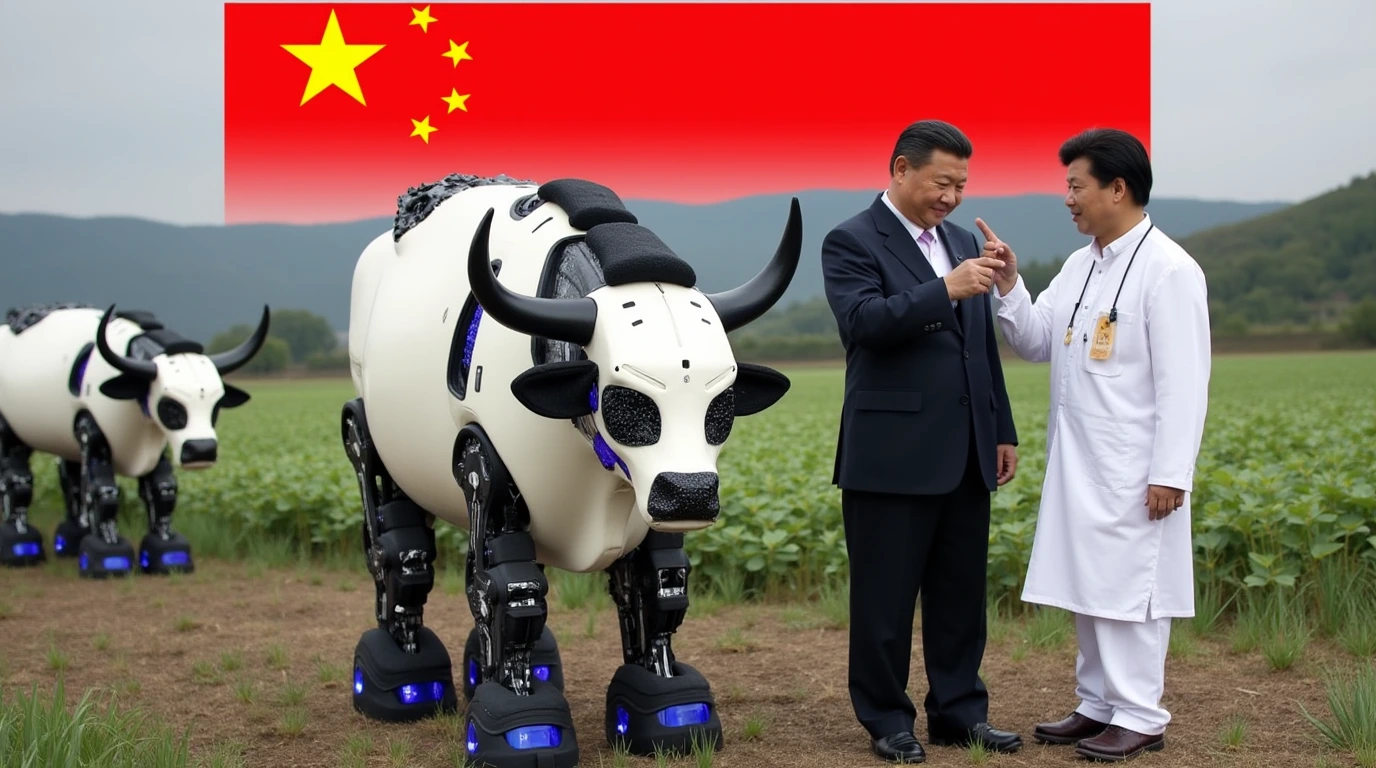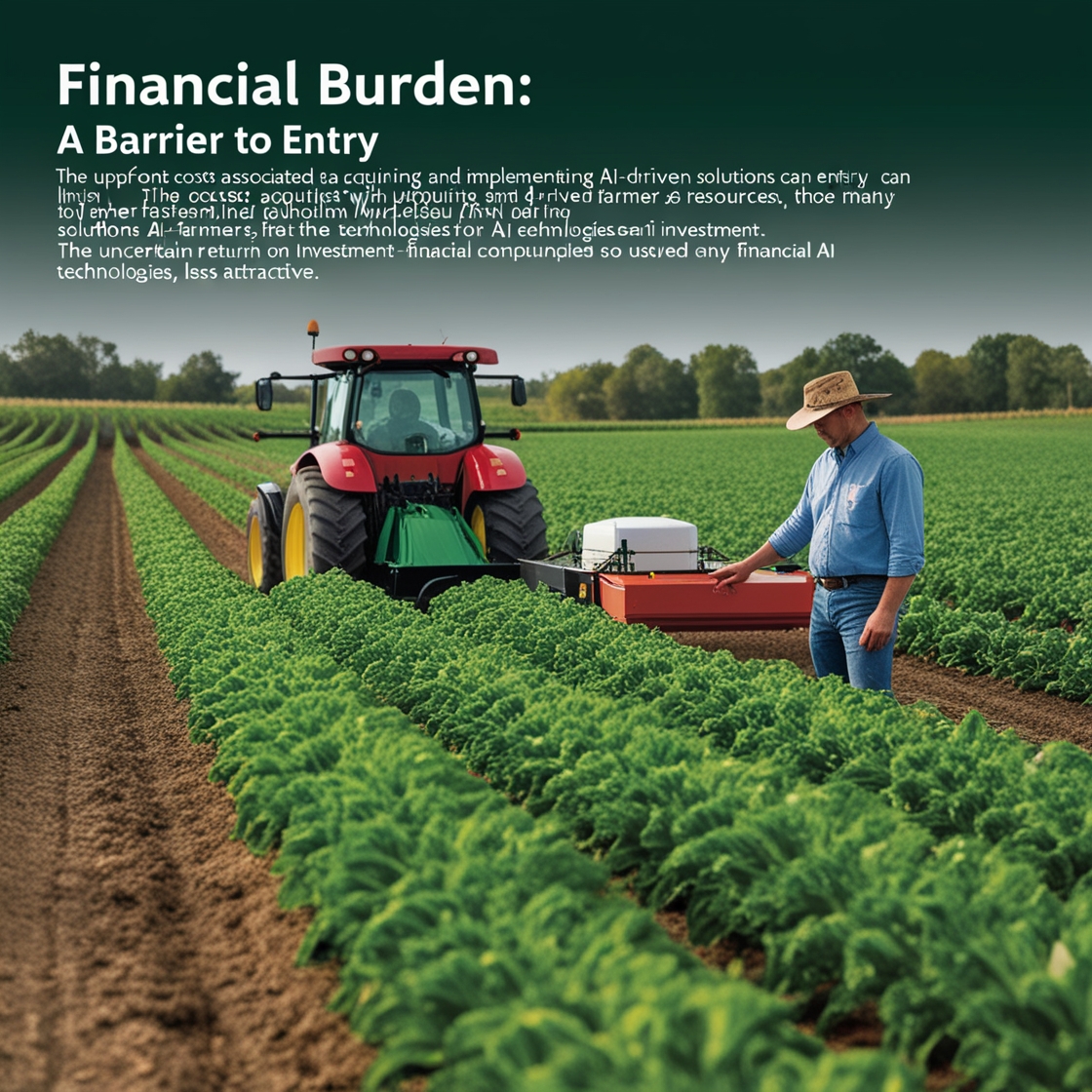China’s Robotic Farm has set a new benchmark, showing the world how automation can revolutionize food production.
Imagine a world where farms operate seamlessly without human intervention—crops are planted, monitored, and harvested by intelligent machines.
This is no longer a futuristic dream but a present-day reality. AI-powered farming is transforming agriculture, enhancing efficiency, reducing waste, and ensuring a more sustainable food supply.
But how do these cutting-edge technologies work? And what impact will they have on the future of farming? Let’s explore.
How AI and Robotics Are Revolutionizing Agriculture : China’s Robotic Farm
The Rise of Fully Robotic Farms in Agriculture
How China Built the First Fully Robotic Farm
China has taken a giant leap in agricultural innovation by launching its first fully autonomous farm. This groundbreaking facility uses artificial intelligence, robotics, and IoT technology to manage all aspects of food production—from soil preparation to harvesting—without human labor.
The farm integrates AI-driven sensors, smart irrigation systems, and autonomous tractors, ensuring that every step is optimized for maximum yield and sustainability. This project highlights a significant shift towards automation in agriculture, setting the stage for future smart farming initiatives worldwide.
Key Benefits of Robotic Farming
AI-driven farming solutions offer several advantages, making traditional methods look obsolete. Some of the key benefits include:
- Increased Efficiency – Machines operate 24/7, maximizing productivity.
- Reduced Labor Costs – Eliminates dependency on manual workforce.
- Precision Agriculture – AI-powered sensors optimize water usage, fertilization, and pesticide application.
- Sustainability – Smart technologies reduce waste and improve resource management.
The Future of AI-Powered Agriculture
With rapid advancements in machine learning, robotics, and automation, the future of farming is becoming increasingly high-tech. Industry experts predict that within the next decade, autonomous farms will become the norm, integrating AI-powered robots, self-operating drones, and data-driven analytics to create a more efficient and sustainable food production system.

AI-Powered Harvesting Robots: Revolutionizing Crop Picking
Berry – The Autonomous Strawberry Harvester
Picking delicate fruits like strawberries requires precision. That’s where Berry, the AI-driven harvesting robot, comes in. It uses cutting-edge vision technology to scan, identify, and pick only the ripest strawberries, ensuring premium-quality produce.
Berry’s key features include:
- Autonomous navigation in greenhouses.
- Storage capacity of up to four crates, maximizing efficiency.
- Minimal human interaction, reducing labor costs.
Virgo’s AI-Powered Harvesting Robot
Virgo takes crop picking to the next level. Using AI-driven motion sensing and deep learning algorithms, this robot harvests tomatoes with extreme precision. What sets it apart is:
- Soft grippers that mimic human hands.
- 3D sensors to detect ripe fruit while avoiding leaves and vines.
- Ability to operate continuously, reducing harvest time.
Carbon Robotics Laser Weeder G2
Weed control has always been a challenge for farmers. Enter Laser Weeder G2, an AI-powered robot that eliminates weeds using precision laser technology. Key benefits:
- Reduces herbicide use by 80%, making farming more sustainable.
- Works on different crop types, making it highly versatile.
- Boosts overall farm profitability by increasing crop yields.
AI-Powered Drones and Autonomous Vehicles in Farming
DJI Agras T50 – The Smart Agricultural Drone
Drones have become indispensable in modern farming, and DJI’s Agras T50 leads the way. This AI-driven drone specializes in precision spraying and spreading to enhance crop management.
Why farmers love it:
- Covers large areas efficiently, reducing operational costs.
- Uses AI to adjust spraying based on real-time data, minimizing waste.
- Works in various climatic conditions, ensuring reliability.
XAG X150 – AI-Driven Farm Vehicle
The XAG X150 is a multi-purpose, AI-powered autonomous vehicle designed for various agricultural tasks. Features include:
- Configurable for spraying, delivery, and transport.
- Carries up to 150kg (330 lbs), reducing manual labor.
- Equipped with RTK GPS for centimeter-level accuracy.
Sabi Agri Zylus – Electric Vineyard Vehicle
For vineyard owners, the Zylus electric vehicle is a game-changer. It operates for up to 10 hours non-stop and fully recharges in under 2 hours, offering:
- Efficient soil management for vineyards.
- Multiple control options, including remote operation.
- Precise navigation for enhanced productivity.
AI in Weeding and Soil Management

Nexus Robotics Levra – The Autonomous Weeding Robot
Weeds compete with crops for nutrients, making efficient weeding crucial. Levra uses AI-powered cameras and deep learning algorithms to:
- Distinguish between crops and weeds with high accuracy.
- Remove weeds autonomously, reducing labor costs.
- Provide real-time crop health data to optimize farming decisions.
Dino Robot – AI-Powered Weeding Machine
The Dino Robot employs advanced deep learning technology to eliminate weeds while preserving crops. Its unique features include:
- GPS tracking for real-time precision weeding.
- Deep learning-based plant recognition.
- Minimal soil disturbance, preserving soil health.
How AI Enhances Soil Management
Smart farming isn’t just about planting and harvesting—it’s also about maintaining soil health. AI-driven soil management systems help farmers:
- Monitor nutrient levels with real-time data.
- Optimize irrigation for water conservation.
- Predict potential soil issues before they affect crops.
The Future of AI in Agriculture
How AI Will Shape the Next Decade of Farming
As technology advances, we can expect:
- Fully automated farms integrating AI, robotics, and big data.
- Smart irrigation and greenhouse systems optimizing resource use.
- AI-powered analytics predicting crop diseases before outbreaks occur.
Challenges and Regulatory Hurdles
Despite its benefits, AI-driven farming faces some roadblocks:
- Regulatory concerns regarding autonomous machinery.
- Data privacy issues related to AI-based farm analytics.
- High initial costs of adopting smart farming technology.
Final Thoughts – The Age of AI Farming
AI-powered farming is no longer just a concept—it’s the future. By integrating machine learning, robotics, and automation, the agricultural sector is becoming more efficient, productive, and sustainable. As AI technology evolves, farmers who adopt these innovations will gain a competitive edge, ensuring higher yields, reduced costs, and a more resilient food supply chain.
FAQ: AI-Powered Farming and Robotic Agriculture
1. What is AI-powered farming?
AI-powered farming refers to the use of artificial intelligence, robotics, and automation to improve agricultural productivity. It includes technologies like autonomous tractors, AI-driven drones, smart irrigation systems, and robotic harvesters to optimize crop management and reduce human labor.
2. How do robotic farms work?
Robotic farms use autonomous machines equipped with AI, sensors, and real-time data analysis to perform tasks like planting, watering, harvesting, and weeding without human intervention. These farms rely on machine learning and precision agriculture to maximize efficiency.
3. What are the benefits of AI in agriculture?
AI in agriculture enhances productivity, reduces labor costs, minimizes waste, and optimizes resource use. It also improves crop monitoring, pest control, and soil management while lowering environmental impact.
4. Are AI-driven farms sustainable?
Yes, AI-driven farms help reduce water and pesticide usage, decrease carbon footprints, and improve land utilization. Automated systems can detect plant diseases early, ensuring healthier crops with minimal waste.
5. Will AI replace human farmers?
AI and robotics are designed to assist rather than replace human farmers. These technologies handle repetitive and labor-intensive tasks, allowing farmers to focus on strategic decision-making and farm management.
6. What are some examples of AI-powered farming technology?
Examples include:
- Berry – An autonomous strawberry-picking robot.
- DJI Agras T50 – A precision agricultural drone for spraying and monitoring.
- XAG X150 – A multi-purpose autonomous farm vehicle.
- Dino Robot – A deep-learning-powered weeding robot.
- Carbon Robotics Laser Weeder – AI-driven laser weed control system.
7. How much do AI farming robots cost?
The cost varies depending on the type and capabilities of the robot. Small autonomous weeders may cost around $50,000, while advanced robotic harvesters and drones can exceed $100,000. However, long-term savings on labor and increased efficiency often justify the investment.
8. How can farmers implement AI on their farms?
Farmers can start by integrating AI-powered sensors, drones, or automated irrigation systems. Partnering with agritech companies and using data-driven farm management software can also accelerate AI adoption.
9. What challenges do AI-driven farms face?
Challenges include high initial costs, technological integration, data privacy concerns, and regulatory hurdles. Additionally, AI adoption requires training and adaptation by farmers.
10. Is AI in farming the future of agriculture?
Yes, AI-powered agriculture is rapidly evolving and will play a critical role in the future of food production. As technology advances, robotic farms will become more accessible, efficient, and sustainable.
Are you ready to embrace the future of farming? AI-driven technology is transforming agriculture, offering smarter, more efficient ways to grow crops. Whether you’re a farmer, investor, or tech enthusiast, now is the time to explore how AI can revolutionize the industry. Share your thoughts in the comments below!



